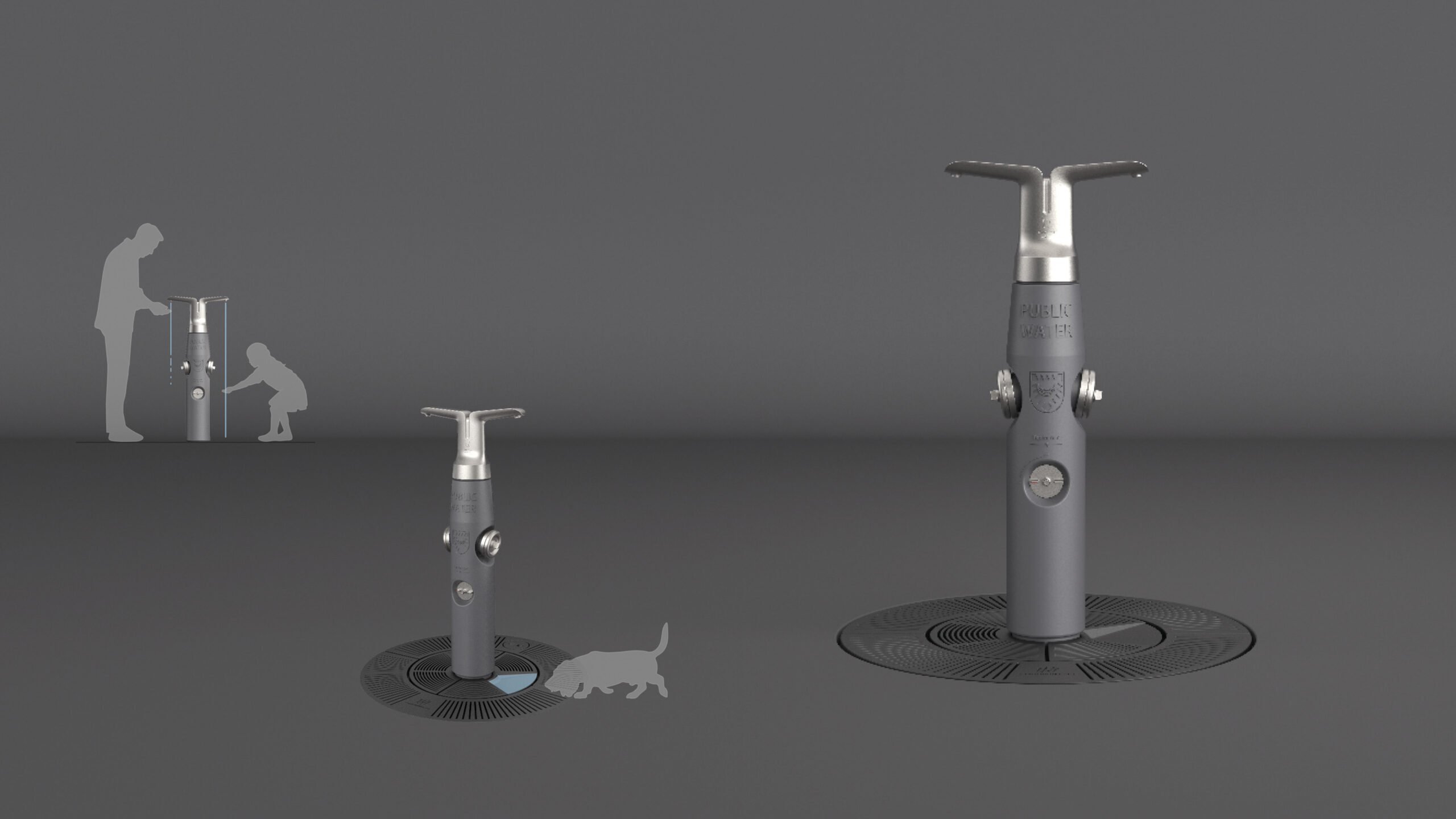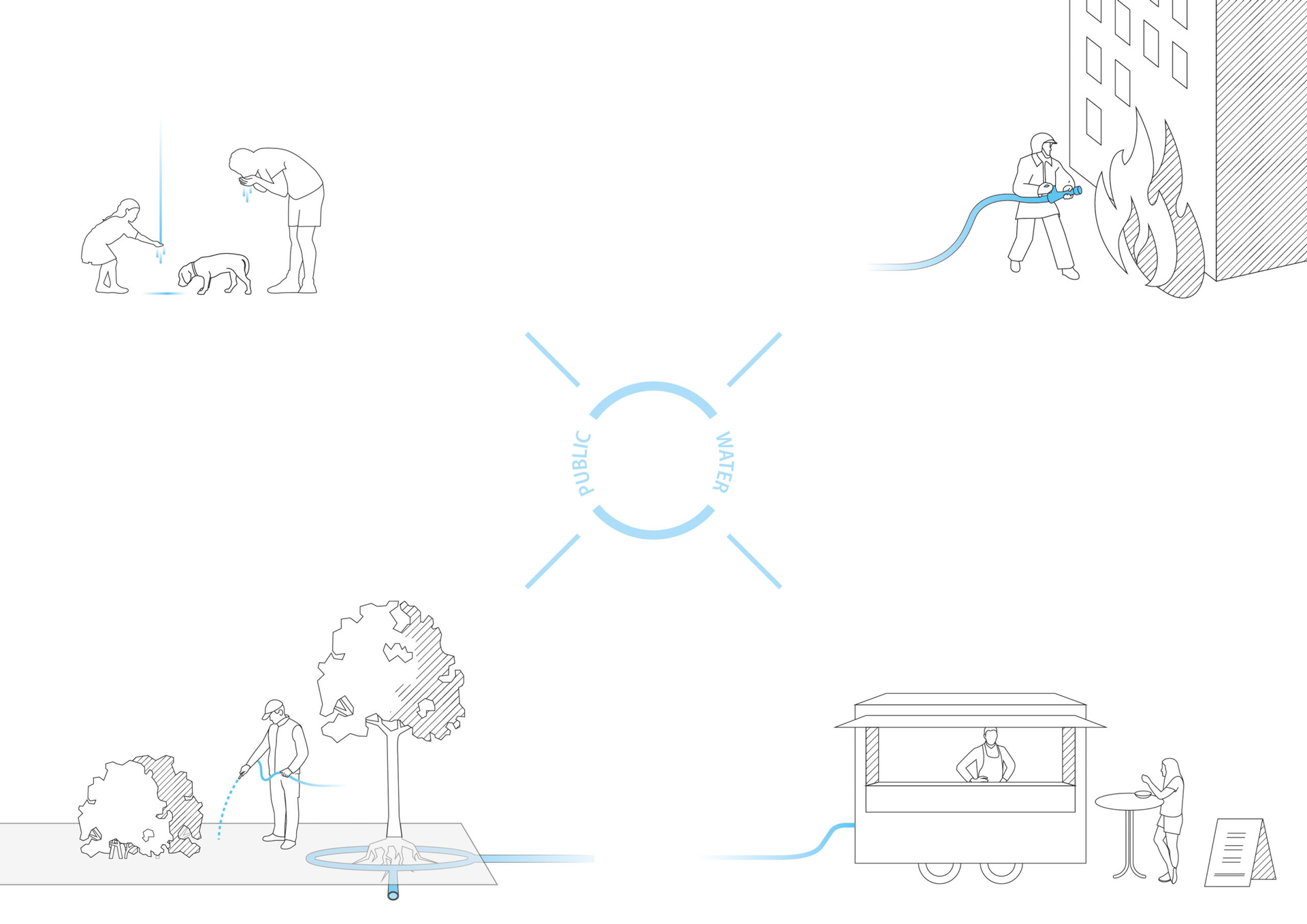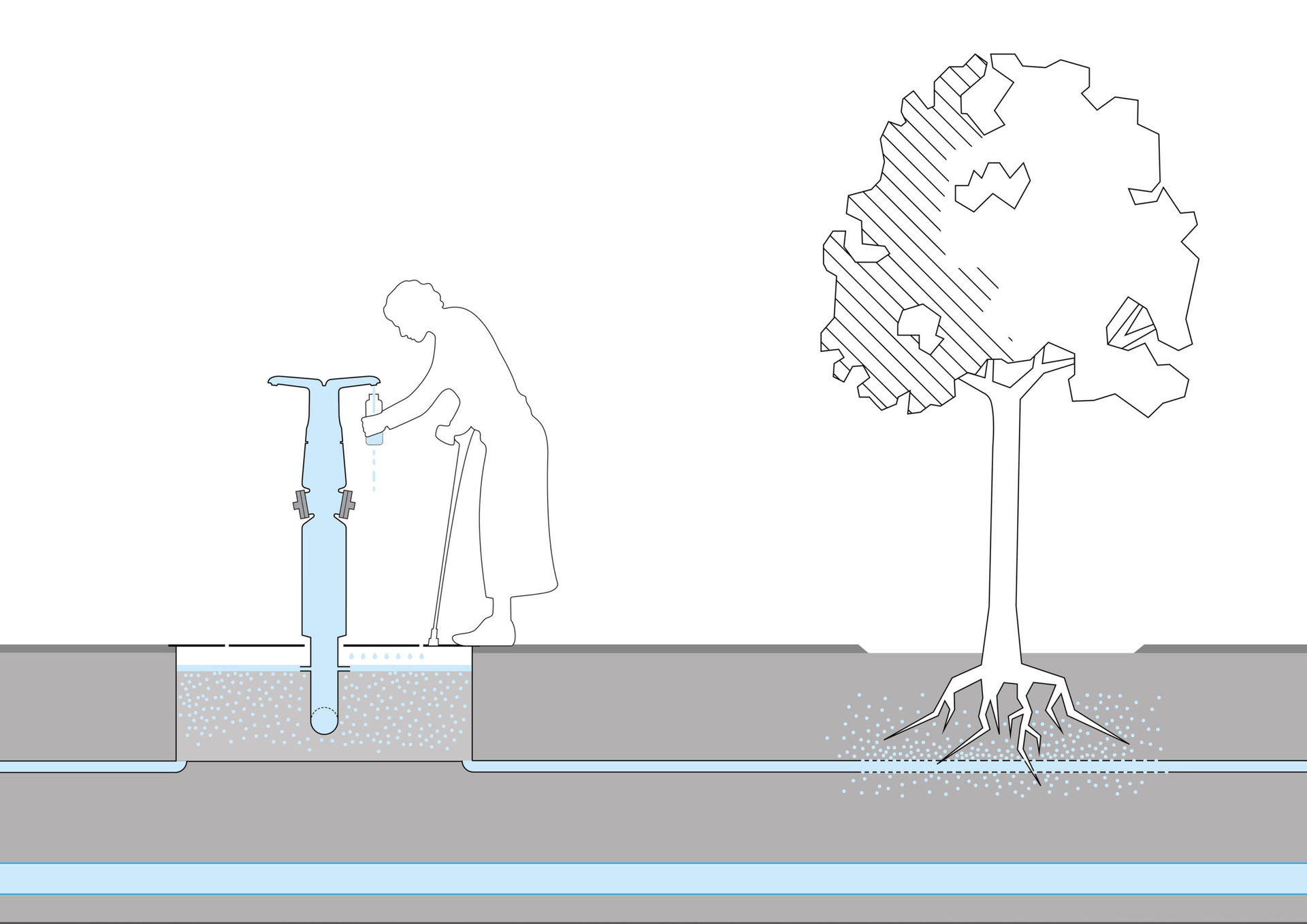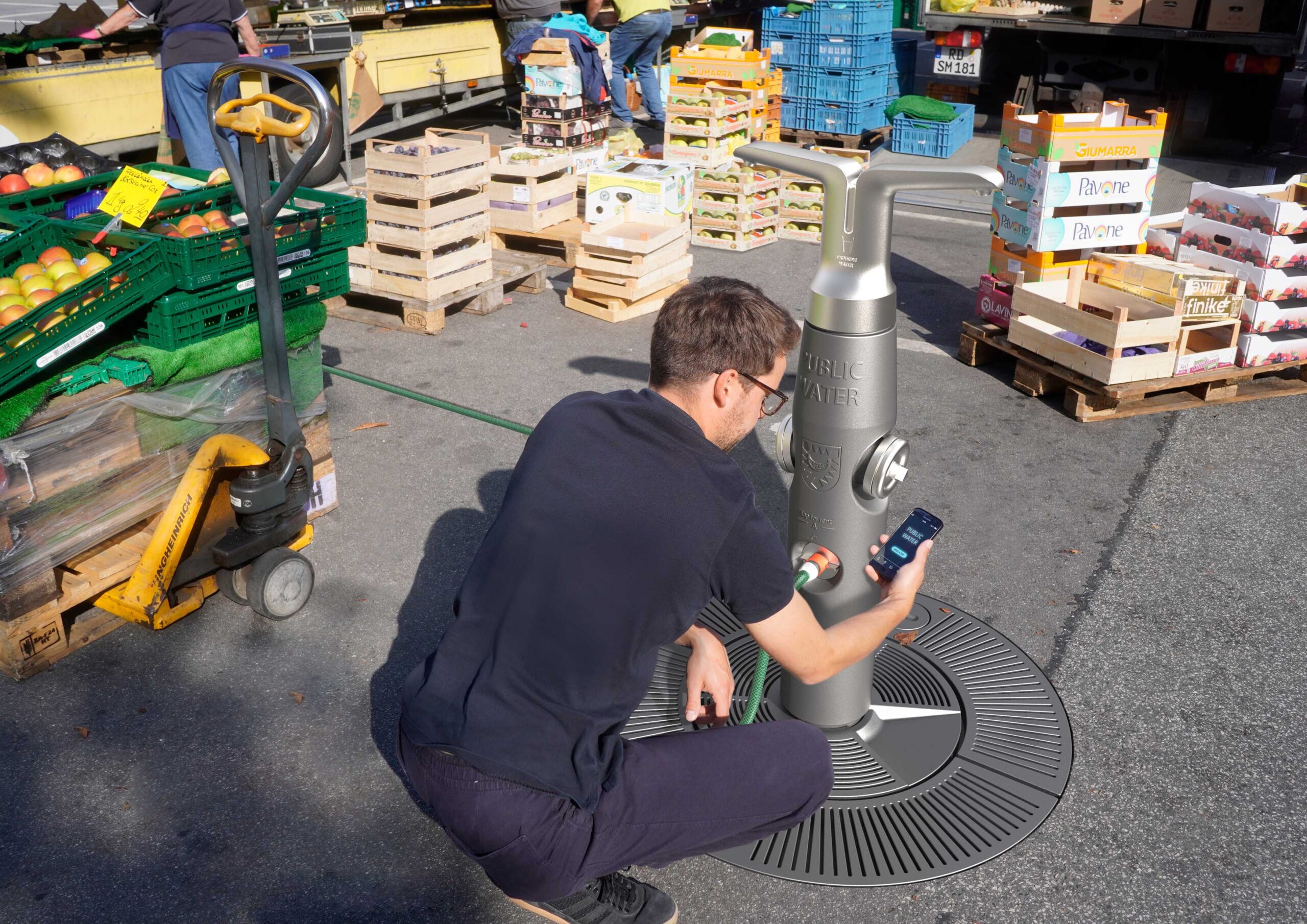WATERePUBLIC
Creator:
Jadwiga Slezak
Curator's Note
Updated: November 2022
With this project, Jadwiga sets new standards for urban public life. Getting fresh and clean water from the tap at any time of the day or night is a luxury that has become a standard for Western countries. What is taken for granted by many people today, and to transfer it from private spaces to the public, is a very desirable future vision. It will be interesting to see when this new standard takes hold.
Stay tuned for follow-ups.
Abstract
WATERePUBLIC transforms existing hydrant infrastructure into public water fixtures. People and animals have access to fresh drinking water at all times and can refresh themselves on hot summer days. This offers an alternative to CO2- and plastic-intensive bottled water and promotes the consumption of tap water.


Access to water in public spaces plays an important role in solving key problems of our time.
Public spaces are increasingly neglected and privatized. Social inequality is growing, more and more people suffer from obesity and lack of exercise, and our immense amount of CO2 and plastic waste is alarming.
Along with this, climate change is placing additional new demands on us. Heat waves are having a negative impact on the health and quality of life of people and animals, and green plants are also suffering increasingly from climatic conditions. Yet they are an important factor for climate protection in our cities.
While we discuss e-mobility, CO2 taxes and passive houses in the climate debate, one important topic is often forgotten: How we deal with water.

One liter of tap water is up to 586 times more environmentally friendly than still bottled water. If all Germans only drank tap water, 3 million tons of CO2 could be saved every year. This is equivalent to 1.5 times the volume of air traffic within Germany.
Studie beweist: Trinkwasser ist Klimaschutz – jetzt umsteigen auf Leitungswasser. Gelsenwasser blog, 19.März 2020

For events such as weekly markets and street festivals, water connections can be rented via an app. This increases the quality of life in our cities and turns empty squares into gathering places. The costly installation of standpipes, on the other hand, is no longer necessary.
Any resulting graywater is collected and channeled via a drainage system to adjacent city trees and green spaces.
The green space offices and citizens who want to participate in the maintenance of the urban green space also have access to water at all times. This protects our urban climate, promotes participation and strengthens the sense of community in our neighborhoods.


